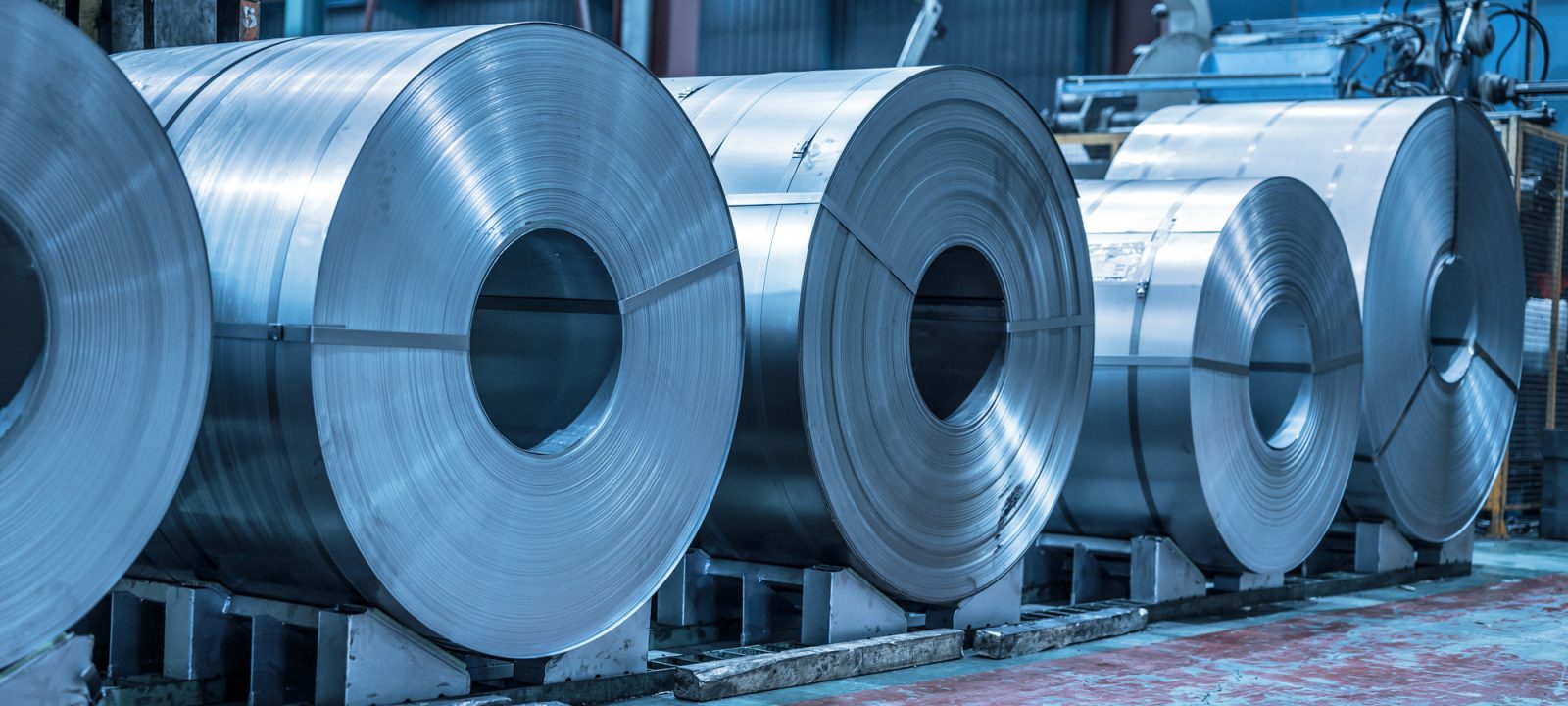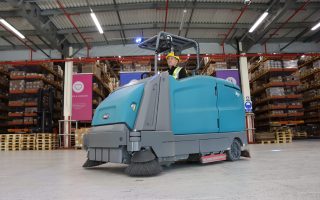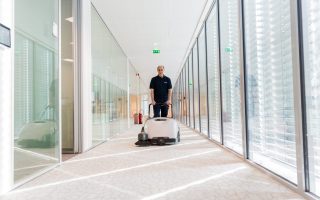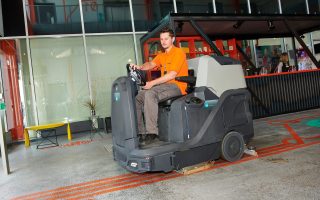In the realm of manufacturing and industry, industrial machinery plays a pivotal role. These machines are used widely in large-scale business settings for heavy industry and production and serve all manner of industries. Often large and heavy, emitting large amounts of dust and dirt, and highly expensive to purchase or repair, many factories or industrial facilities use their industrial machines for 12 or more hours a day and the reliance on their use is high. To avoid breakdowns, downtime, and costly repairs, it is crucial to ensure these appliances are kept clean.
Samsic has been working with manufacturing and industrial businesses nationwide for over 35 years, providing professional cleaning services to keep not only the production facilities clean and safe, but also industrial machines themselves in peak condition.
We supply our clients with a combination of dedicated, knowledgeable teams, innovative cleaning products, and state-of-the-art cleaning technology, to make revolutionary changes within their businesses and across industry.
For an answer to “what is industrial machinery”, and how to clean it, please read our comprehensive guide.
What are industrial machines?
Industrial machines encompass a diverse range of equipment and systems crafted for industrial applications. Found predominately in manufacturing, industrial and commercial settings, these machines automate tasks, maximise efficiency, and enable large-scale production. The wider benefits of industrial machines include:
- Efficiency: Industrial machines provide heightened production efficiency and output, surpassing that of manual labour.
- Mass Production: The rapid and consistent mass production of goods.
- Cost Reduction: Long-term business costs are reduced as processes are automated, labour costs are lowered, and resources are optimised.
- Quality Control: Equipped with sensors and control systems, industrial machines ensure a consistent high quality of production.
- Safety and Compliance: Workplace safety is enhanced as hazardous tasks become automated to comply with industry regulations and safety standards.
- Integration with Modern Technologies: Industrial machines can often integrate with IoT, AI, and robotics, enabling smart manufacturing and Industry 4.0 practices for data-driven decision-making and improved efficiency.
Industrial machinery has highly diverse applications that are tailored to the needs of the organisations that use it. Examples include High-Speed Food Packaging Machines used within the food production industry, Injection Moulding Machines used within plastic parts production, and industrial robots which are found anywhere from assembly lines to warehouses.
Categorising industrial machinery is typically based on the nature of how material is removed during their operation. Each method has specific applications, chosen according to the requirements of the desired end product.
- Machining without Shaving Removal: Where material is removed from a workpiece without generating chips or waste. A common example is Electrical Discharge Machining (EDM), where material is eroded using electrical discharges between an electrode and the workpiece without direct contact. This method optimises resources efficiently.
- Machining by Abrasion: Material is removed by abrasive action, typically using grinding wheels or belts, to achieve the desired shape. Examples include grinding, honing, and polishing, commonly used in precision surface finishing, such as in furniture production.
- Machining by Shaving Removal: Involves removing material in the form of chips or shavings to shape a workpiece precisely. Turning, milling, and drilling are all examples, where either the workpiece or the tool rotates to cut the desired shape. This method is widely used for producing precise shapes and dimensions.
What are industrial machinery components?
Industrial machinery components are the essential parts and elements that make up a machine, working together to enable the machinery to perform specific functions and tasks. These components may include the control system of the machine, the working tools or mechanisms, the sensors, or the cooling systems. The most common industrial machinery components are listed below, along with a description of their importance.
Motors
The power source of the machine, converting electrical or mechanical energy into motion to drive the machine. These are found in all industrial machines and are a crucial industrial machinery component as they power the wider machine.
H3: Gears
Gears are integral industrial machinery components, regulating power and motion transmission between shafts. They control speed, torque, and direction, influencing the efficiency, functionality, and movement of machines. In a milling machine, for example, gears play a crucial role in achieving precise cuts at different speeds, contributing to controlled production.
Switches
Industrial machine switches control electricity flow, initiating or interrupting functions within the machine. An emergency stop switch, for example, ensures immediate power cessation for a swift shutdown during emergencies. Switches also play a role in automation, enabling programmed activation and deactivation of specific processes.
Lamps
Industrial machine lamps enhance visibility for safe and efficient operations. They enable effective monitoring of machinery, inspection of components, and maintenance tasks. In CNC machines, task lighting illuminates the work area and cutting tools, ensuring operators can oversee the machining process for accurate and efficient production.
Fuel pumps
Fuel pumps are critical industrial machinery components, as they store and supply fuel to the machine’s engines and combustion chamber, maintaining the proper fuel-air mixture for performance and energy efficiency. A diesel fuel pump in a generator, for example, ensures a steady supply of diesel fuel to the engine, allowing the generator to produce a continuous and reliable power output.
Seats
Industrial machine seats provide a comfortable and ergonomic workspace for operators, ensuring operator comfort, safety, and productivity during prolonged machine operation. As industrial machinery components, ergonomically designed seats help prevent operator fatigue and discomfort, enhancing overall safety and productivity.
Which sectors utilise industrial machinery?
Industrial machinery is utilised across various sectors for a wide range of applications. Some of the major sectors that extensively use industrial machinery include the agriculture industry, culinary industry, manufacturing industry, health industry, and amusement industry – just to name a few.
The machinery used in each sector will differ, as will the industrial machinery components incorporated.
As an example of the diversity of industrial machinery, see the below industries for a snapshot of how industrial machinery is used to produce and distribute gas, electricity and water, and much more.
Manufacturing: Industrial machinery is fundamental in manufacturing processes, encompassing sectors such as automotive, aerospace, electronics, and consumer goods.
Food and Beverage: Machinery is employed in food processing, packaging, and beverage production to automate and streamline various stages of the manufacturing process.
Pharmaceuticals: Pharmaceutical manufacturing relies on specialised machinery for processes such as blending, granulation, tablet pressing, and packaging.
Utilities: Industrial machinery is used in utilities like water treatment plants, wastewater management, and electrical grid operations.
Textiles: Industrial machinery is utilised in textile manufacturing for tasks such as spinning, weaving, and dyeing processes.
What does the industrial machinery industry produce?
The industrial machinery industry produces a wide array of equipment and machinery used in various sectors for manufacturing, construction, energy production, and more. Some key products manufactured by the industrial machinery industry include:
- Machine Tools: Tools like lathes, milling machines, and machining centres shape materials in manufacturing.
- Industrial Robots: Robotic systems automate tasks such as assembly, welding, and material handling, boosting efficiency in manufacturing.
- Construction Machinery: Heavy equipment (e.g., excavators, bulldozers) used in construction and infrastructure development.
- Mining Equipment: Machinery for drilling, blasting, excavation, and material transport in mining operations.
- Agricultural Machinery: Tractors, combine harvesters, and irrigation systems designed for farming.
- Power Generation Equipment: Turbines, generators, and other machinery in power plants for electricity production.
- Pumps and Compressors: Devices for fluid and gas movement in industrial processes.
- Material Handling Equipment: Conveyor systems, forklifts, and automation for material movement in manufacturing and logistics.
- Printing and Packaging Machinery: Equipment like printing presses and packaging machines for industries.
- Textile Machinery: Spinning machines, looms, and equipment for textile fabric production.
- Metalworking Machinery: Equipment for shaping and processing metal, such as presses and shears.
- Plastics Machinery: Injection moulding machines and extruders, for producing plastic products.
- Woodworking Machinery: Tools (e.g., saws, planers) used in wood processing.
- Food Processing Machinery: Equipment like mixers, grinders, and packaging machines in food manufacturing.
- Pharmaceutical Machinery: Machinery for pharmaceutical production, including tablet presses and mixing equipment.
These diverse instruments, and their internal industrial machinery components, collectively contribute to the efficiency, automation, and technological advancement of various industries, driving economic development and meeting the demands of global markets.
What is the difference between industrial machines and consumer products?
The contrast between industrial machines and consumer products lies in their designated purpose, scale, and application.
Consumer products, such as washing machines, coffee makers, and refrigerators, are compact, affordable machines tailored for household use. They are easily transportable, affordable, and designed for user-friendly interaction.
Industrial machinery components, however, are designed to cater to mass production and large-scale industrial applications. Assembly line robots, printing presses, and CNC machinery, as examples, are robust and complex, and are often tailored to specific industrial processes and customised based on specific application requirements.
While there may be occasional crossover, the distinct scale and complexity of industrial machines sets them apart. Some industrial machinery components may find use within the home, although this is unlikely. Robotics, for example, are used for industrial purposes but are accessible to consumers in some capacities such as for automated household tasks. The complexity and mass-scale use of industrial machines remain key distinguishing factors, differentiating them from consumer goods.
How to clean industrial machinery?
Cleaning industrial machinery and industrial machinery components is essential for maintaining optimal performance, preventing malfunctions, lengthening the machine’s life, and ensuring a safe working environment. Effective cleaning requires knowledge of the machine’s manufacturer’s manual, as to follow the instructions, and ensure use of the cleaning agents that will have the best results without damaging the machine.
Cleaning for machinery can take place on a periodic basis, depending on the application of the machine and the level of dirt and dust it acquires, however regular cleaning ensures the equipment is kept in the best state possible.
With over 35 years of industrial cleaning expertise, Samsic collaborates with leading clients such as Kraft Heinz to employ sustainable cleaning practices through the ‘Samsic 2030’ sustainable development initiative to optimise operations. This ensures high-quality, eco-friendly industrial cleaning tailored to each client’s needs, minimising the carbon footprint on-site and where the cleaning is fulfilled to the highest quality.
As industry experts, we recommend, for cleaning industrial machinery and industrial machinery components, utilising the following 2 steps:
- Preparation phase:
- Read the manufacturer’s manual for specific cleaning instructions and recommended agents;
- Power off machinery and utilise lockout procedures to guarantee the safety of personnel;
- Ensure the correct Personal Protective Equipment (PPE) is worn to avoid personal injury;
- Remove debris using brushes, compressed air, or vacuum systems to remove loose dirt and dust. Focus on buildup prone areas such as cooling fins and vents;
- Inspect for signs of wear, damage, or loose parts and address promptly to prevent further damage.
- Proceed cleaning:
- Use recommended cleaning agents, avoiding water damage, and opting for mild detergents or degreasers when necessary. Samsic’s Toucan Active Solution, for example, a powerful and environmentally friendly cleaner produced on-demand, eliminates chemical and packaging waste. Toucan can be created in bulk quantities, making it an ideal choice for industrial machinery.
- Lubricate moving parts according to the manufacturer’s recommendations to reduce friction and wear.
- Inspect electrical components, ensuring they are completely dry before re-energising the machinery.
- Establish a regular cleaning schedule to proactively prevent dirt accumulation of dirt and extend the machinery lifespan.
- Document the cleaning process for tracking machinery condition and planning future maintenance needs.
The worth of industrial machinery
The global market for industrial equipment surpasses $100 billion. What is industrial machinery, along with its components, constitutes a multi-billion-dollar industry pivotal for constructing infrastructure and serving as the foundational tools for diverse global industries. This sector plays a crucial role in the production of various products and resources essential for businesses worldwide.
As technology advances and demands for housing, food, and other industries rise, the demand for the infrastructure created by industrial machinery is expected to grow. What is industrial machinery and its components continue to be integral players in shaping and supporting the evolving needs of industries across the globe.
The future of industrial machinery
The demand for industrial machinery is poised for significant growth, driven by the heightened capabilities of technology. The question of “what is industrial machinery” is changing and developing, encompassing increasingly advanced technologies and innovations, and industrial machines are becoming increasingly pivotal in shaping modern manufacturing landscapes.
This future of growth for industrial machinery is the result of several factors:
- Automation and Industry 4.0: Industry 4.0, driven by automation, data exchange, and IoT technologies, is transforming manufacturing processes. Industries are increasingly adopting smart factories, which rely heavily on advanced industrial machinery.
- Increased Efficiency and Precision: Technological advancements elevate the efficiency and precision of industrial machinery, enhancing manufacturing processes, reducing waste, and delivering higher-quality output. This propels industries to invest in modern machinery.
- Digitalisation of Manufacturing: Integrating new industrial machinery component technologies like digital twin simulations, artificial intelligence, and advanced analytics enhances overall efficiency and productivity in industrial machinery. The demand for modern machinery rises as manufacturers aim to stay competitive.
- Customisation and Flexibility: Modern markets require industrial machinery to be more adaptable and customisable, addressing diverse market demands. This encourages industries to invest in machinery that can be easily reconfigured.
- Remote Monitoring and Maintenance: There is an increased demand for IoT-enabled sensors and connectivity options as additional industrial machinery components for the remote monitoring and predictive maintenance of industrial machinery. This reduces downtime, improves maintenance planning, and extends the lifespan of equipment.
- Energy Efficiency: With a growing focus on sustainability, industries are replacing older machinery with technologically advanced models that consume less energy and produce fewer emissions.
- Integration with Artificial Intelligence: Industrial machinery is now increasingly integrating with AI for improved decision-making, autonomous operation, and the ability to adjust to changing production requirements.
- Emerging Technologies: Incorporation of technologies such as robotics, 3D printing, and advanced materials enhances the capabilities of industrial machinery, making it indispensable for modern manufacturing.
As industries endeavour to maintain competitiveness, enhance efficiency, and meet evolving market demands, the demand for industrial machinery and industrial machinery components certainly will not waiver, with significant growth being propelled by ongoing technological advancements
In the realm of manufacturing, industrial machinery plays a pivotal role, contributing to large-scale production across diverse sectors. Samsic, with over 35 years of experience, ensures the cleanliness and optimal performance of industrial facilities and machinery. We combine our dedicated teams and ‘people power’ operational processes with cutting-edge innovations that are tailored to the needs of our clients. As the facilities management provider to nationwide businesses such as Kraft Heinz, KP Snacks, Coty, and Pladis, Samsic’s teams are committed to delivering a sustainable service that prioritises cleanliness, safety, and operational excellence.
For more information contact us today.









